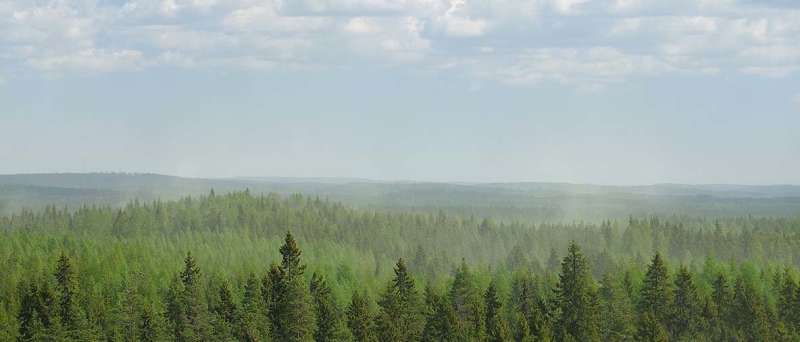Atmospheric aerosol formation from biogenic vapors is strongly affected by air pollutants

According to a recent study published in the journal Science Advances, air pollution not only affects air quality, but it also changes the pathways along which new particles are formed in the atmosphere.
The formation of new aerosol particles is a complicated process. Researchers have only recently started to understand this process on a molecular level after instruments able to detect nanometer-scale particles became available.
The human population has altered the composition of atmospheric gas in several ways. Sulfur dioxide from industrial emissions, nitrogen oxides from traffic, and ammonia from agriculture can all affect particle formation after chemical reactions in the atmosphere. These gases can also interact with organic vapors, which originate mainly from forests and vegetation. The atmosphere contains thousands of different organic compounds, but only a small fraction of them can form and grow particles.
Earlier it was thought that new particle formation always requires sulfuric acid, which forms from the oxidation of sulfur dioxide. Later, it was found that certain organic vapors can also form particles. In this study, the researchers found that in continental moderately polluted atmospheres, e.g. in the Finnish boreal forest, particles are formed most efficiently when sulfuric acid, ammonia and organic vapors are all present simultaneously. Nitrogen oxides, on the other hand, decreased the amount of newly formed particles.
The results help to understand how new particle formation and the associated climate impact will change if air pollution levels decrease in the future due to stricter emission control. Aerosol particles can affect the climate by scattering solar radiation and by acting as seed particles for cloud droplets. The aerosol-cloud-climate interactions are still associated with large uncertainties in current climate models.
The laboratory experiments leading to these results were conducted at the European Center for Nuclear Research, CERN, in Geneva, which has one of the best laboratory facilities for detailed particle formation studies. The study was led by Associate Professor Katrianne Lehtipalo from the University of Helsinki.
"We wanted to create the boreal forest atmosphere in our chamber," she says. Long-term field measurements at the Hyytiala SMEAR II station in southern Finland helped the researchers to identify the right conditions for particle formation.
"Particle formation is a delicate process, and it took us a while to find the correct gas mixture, but in the end we were able to replicate atmospheric observations almost perfectly," Lehtipalo says.
The study was conducted in collaboration between 25 different institutes in 9 different countries.
More information: Katrianne Lehtipalo et al, Multicomponent new particle formation from sulfuric acid, ammonia, and biogenic vapors, Science Advances (2018). DOI: 10.1126/sciadv.aau5363
Journal information: Science Advances
Provided by University of Helsinki




















